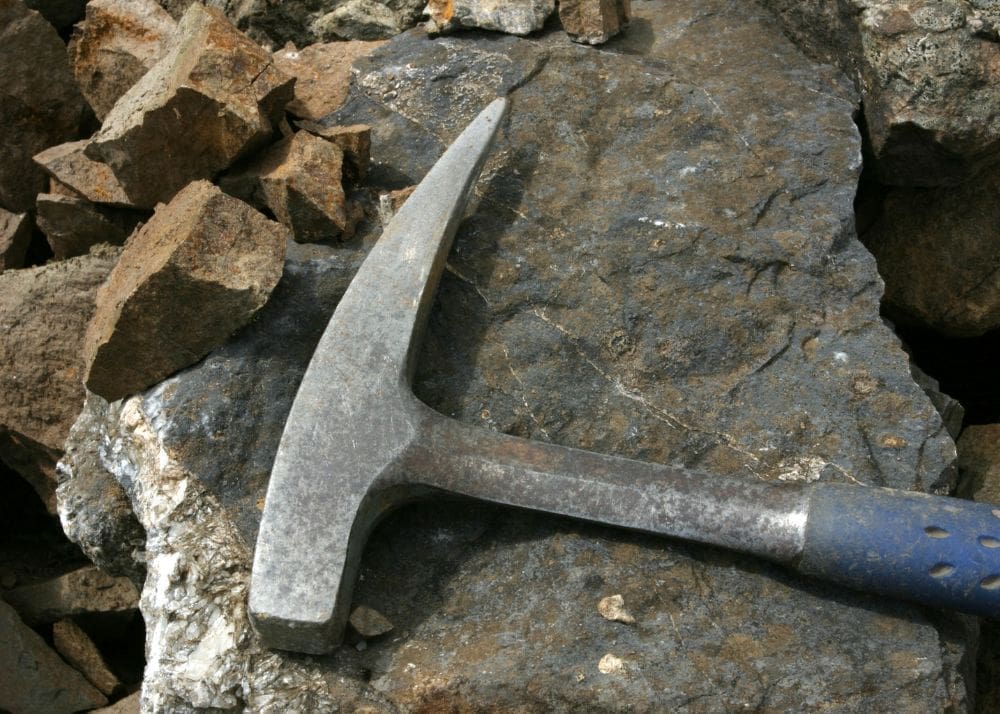Discovering the Best Geology Tools
The art of mineral collecting is a journey back in time, to an Earth that was wildly different from the one we tread upon today. To embark on this adventure, one needs the proper geology tools. While the spirit of discovery can never be sold or bought, the tools that aid in this journey are essential for any mineral enthusiast.
The Foundation of Mineral Exploration
At the very heart of mineral exploration is the mineral hammer, the quintessential tool for any geologist, amateur or professional. Accompanying this should be a sturdy knapsack, as reliable as a trusty steed, ready to carry back the treasures you uncover. And let’s not forget the humble paper and pencil, the unsung heroes that allow you to label and catalog your finds.
Geology Tools for the Field
As you delve deeper into your mineral quest, a chisel, sledgehammer, and crowbar become your companions, helping you to reveal the hidden gems within the toughest of terrains. A magnifying glass and an eye shield will protect you from the shards of your curiosity as you break new ground, both literally and figuratively.
Advanced Tools for the Avid Collector
For those with a keen eye, field glasses are the windows through which the landscape reveals its secrets, while a camera captures the fleeting beauty of nature’s artworks. The inclusion of a Geiger counter might seem like a leap into science fiction, but it’s a geology tool that brings a new dimension to mineral collecting, especially when hunting for the echoes of radioactive elements.
Concluding Your Geological Toolkit
No matter where you are on your mineral-collecting path, the right geology tools can elevate your experience from a mere pastime to a passionate endeavor. With each tool, you not only dig into the Earth but also deeper into the history written in stone, awaiting your discovery.
Choosing Your Geology Tools
Below is a table that outlines the top ten geology tools and provides insights into their practical uses:
| Tool | Description | Where & How to Use |
|---|---|---|
| Mineral Hammer | Essential for extracting rock samples. | Use on rock formations to extract specimens. |
| Knapsack | To carry tools and collected specimens. | Carry during field trips; store finds and gear. |
| Paper & Pencil | For wrapping and labeling specimens. | Use immediately after collecting to organize finds. |
| Chisel | Precisely break rocks to extract minerals. | Apply in areas with hard rock for careful extraction. |
| Sledgehammer | Break large rocks; for serious collectors. | Employ in quarries or for large boulders. |
| Crowbar | Pry apart rocks or remove specimens. | Use in tight spaces or to shift heavy obstructions. |
| Magnifying Glass | Examine details of minerals. | Inspect minerals on-site post-extraction. |
| Eye Shield | Protects eyes during rock breaking. | Wear whenever chipping or fracturing rocks. |
| Field Glasses | Observe terrain for collection sites. | Scout for geological features from a distance. |
| Geiger Counter | Detect radioactive minerals. | Carry in areas with known radioactive elements. |
As we close the book on our exploration of geology tools, remember that each tool has its story, its past adventures etched into its handle, its future ones waiting just beneath the surface. So gear up, head out, and let the Earth tell you its tales.
FAQs about Geology Tools and Mineral Collecting
- What is the most important tool for a beginner mineral collector?
- The mineral hammer is the most fundamental tool for a beginner, allowing for the extraction of mineral specimens from their natural rock matrices.
- Can I find minerals without any specialized tools?
- Yes, surface collecting can yield minerals without the need for tools, but a basic set like a hammer, paper, and pencil will greatly enhance your collecting capabilities.
- What should I use to carry my tools and collected minerals?
- A sturdy knapsack or backpack is ideal for carrying both your geology tools and the minerals you collect.
- How can I ensure safety while using geology tools?
- Always wear protective gear like gloves and eye shields, and make sure to use each tool as intended to prevent injury.
- Do I need a Geiger counter for mineral collecting?
- A Geiger counter is not essential for all collectors but is a valuable tool for those interested in detecting radioactive minerals.
- What are the best methods for labeling and organizing my mineral collection?
- Using paper to wrap and a pencil to label your specimens as soon as you collect them is the best method. Keeping a detailed logbook can also help in organization.
- Is there a particular technique for using a hammer and chisel when collecting minerals?
- Yes, the chisel should be placed at strategic points on the rock and struck with the hammer to cleave the rock and release the mineral specimens with minimal damage.
- How can field glasses help in mineral collecting?
- Field glasses help in scanning the terrain for potential mineral-rich areas, saving time and energy in locating promising collecting sites.
- Are there any legal considerations when collecting minerals?
- Absolutely. Always ensure that you have the right to collect on the land you’re exploring. Collect responsibly and ethically, following local, state, and federal laws.
- How can I learn to identify the minerals I find?
- There are many guides and resources available for mineral identification, including books, online databases, and local geology clubs or groups where you can learn from more experienced collectors. A magnifying glass is a geology tool that can help with visual identification of small details.

